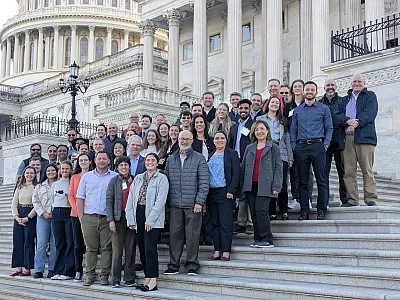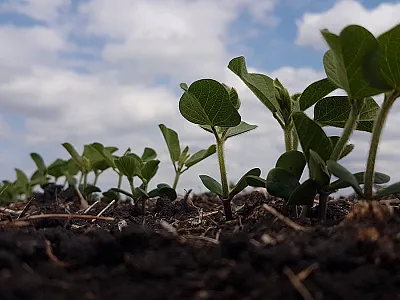Evaluating Overhead Irrigation Sprinkler Packages in Utah
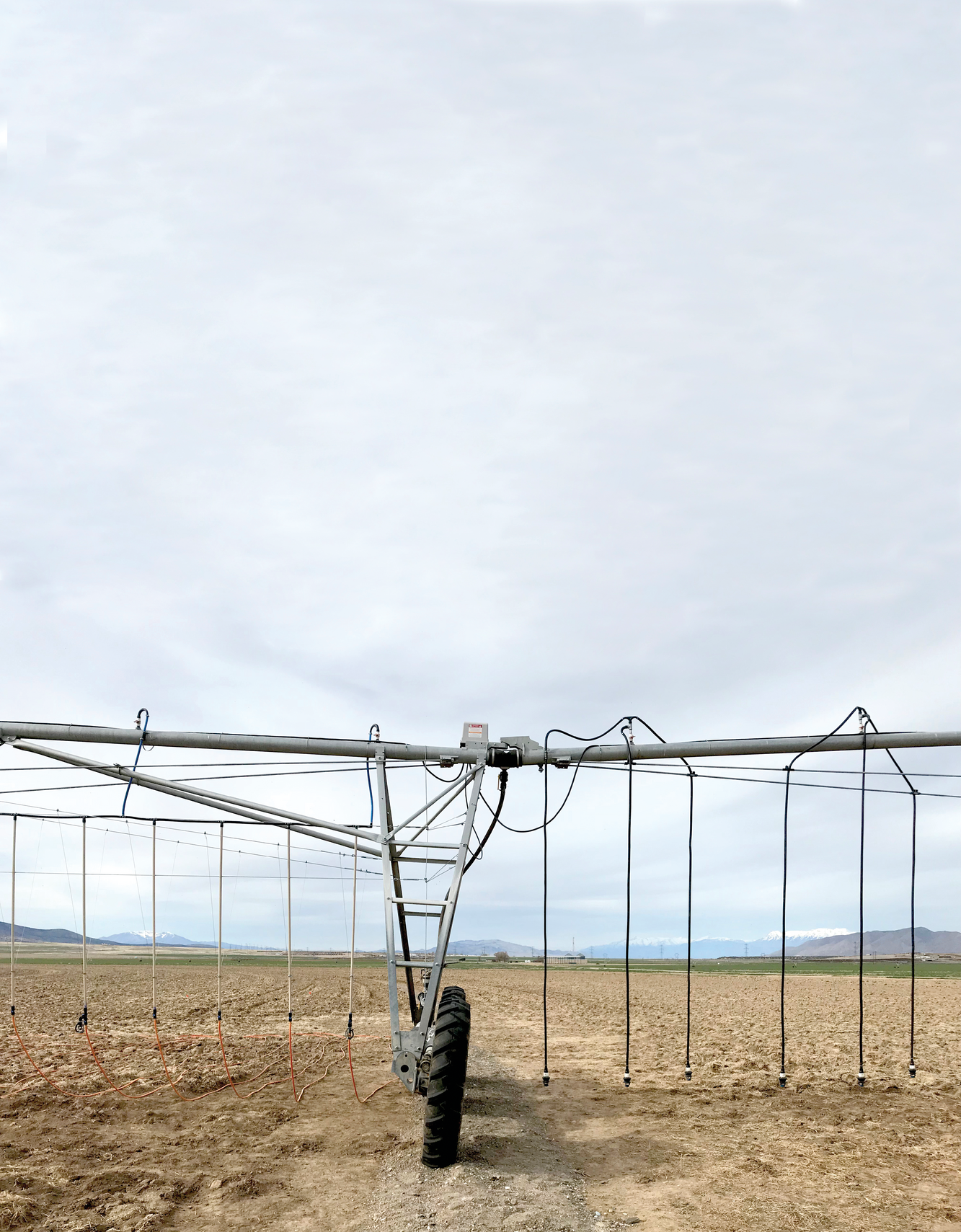

In many areas where center-pivot irrigation methods are used, the most common sprinkler package is called mid-elevation sprinkler application, known as MESA. Two alternative sprinkler packages designed for better water use efficiency are called low-energy precision application, or LEPA, and mobile drip irrigation, called MDI. A recent study evaluated how MDI and LEPA—at full and reduced irrigation rates—impact alfalfa and silage corn yield and quality in trials on two farms in Utah. Earn 0.5 CEUs in Soil & Water Management by reading this article and taking the quiz at https://web.sciencesocieties.org/Learning-Center/Courses.
Drought is one of the largest issues facing agriculture in the United States, particularly in the western part of the country, and causes significant crop loss. Record-breaking droughts have continued to put pressure on western agriculture and the water sources used to irrigate crops.
Evaluating irrigation systems that provide water to crops can greatly assist growers and researchers in understanding how efficiently and effectively different systems supply water. Matt Yost, an associate professor of plants, soils, and climate at Utah State University, and colleagues recently published a paper in the Soil Science Society of America Journal (https://doi.org/10.1002/saj2.20611) focused on evaluating different types of overhead sprinklers used to irrigate crops.
In many areas where center-pivot irrigation methods are used, the most common sprinkler package is called mid-elevation sprinkler application, known as MESA. Two alternative sprinkler packages designed for better water use efficiency are called low-energy precision application, or LEPA, and mobile drip irrigation, called MDI. MESA is typically known to have an application efficiency near 80% while LEPA and MDI have the potential to have greater than 95% efficiency. Application efficiency refers to the amount of irrigation applied to a field that becomes available to the crop.
The key to the potential benefits of LEPA and MDI is how they apply water to a field. In a LEPA system, the sprinklers are augmented to a lower position to be closer to crops. An MDI system uses a center pivot to pull drip lines along the soil that release water. Both of these sprinkler systems reduce what Yost and others refer to as ―forever losses‖ from water evaporation and wind drift. By applying water closer to the crop canopy, the likelihood of these losses by wind and evaporation is lower.
These systems have been available for decades but few growers in Utah and the greater West have adopted them—in part due to the lack of research on their performance and ability to reduce water use,‖ Yost says. ―Most of the research that has been conducted on these systems has evaluated their performance at the same irrigation rates as MESA sprinklers, meaning their ability to use less water has not been determined.
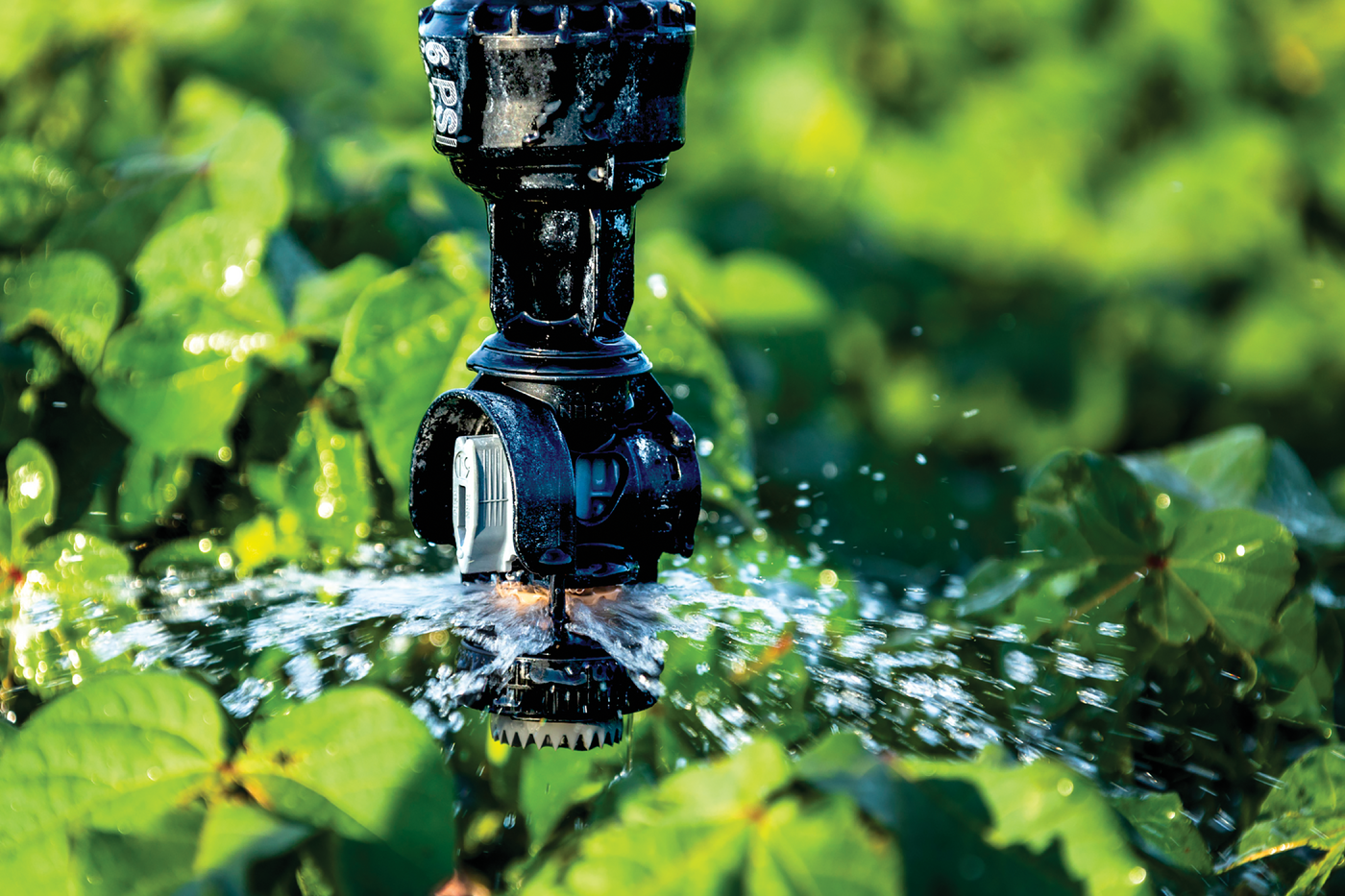
Can MDI and LEPA Sustain Crop Production Using Less Water?
With this knowledge gap in mind, Yost and his colleagues designed a study to evaluate how MDI and LEPA—at full and reduced irrigation rates—impact alfalfa and silage corn yield and quality in trials on two farms in Utah. The rationale behind the reduced rate was to test the success of LEPA and MDI in sustaining crop production with less water than MESA. While they intended to reduce the irrigation rate by 20%, actual reductions in the study range from 5 to 55% due to system, site, and equipment constraints.
Overall, their study found that both MDI and LEPA can maintain alfalfa and corn yield at lower irrigation rates than the control irrigation system, which was MESA in this study. With a 5–55% reduced irrigation rate, LEPA and MDI maintained yield and forage quality in many fields. However, there were also some instances where they reduced yield, even in situations where the application rate was similar to MESA.
"Our findings show these systems can be a great tool for optimizing water use and improving production," Yost says. "―However, the ability was variable, and these systems will not always save water, meaning that their performance is site specific and each should be considered carefully before investments are made."
LEPA: Beware of High Slope, Poor Infiltration
This site specificity is highly related to field conditions, Yost says. When deciding which sprinkler system to utilize with a central pivot, it is important to keep in mind field conditions like soil type, infiltration rate, slope, water availability, water pressure, water flow rate, and more. He adds that slope in particular should be a major consideration. In a sloped area, LEPA is prone to causing runoff because it is a highly concentrated application of irrigation. In addition, in soils with poor infiltration, LEPA can cause runoff or ponding in low areas. Yost says these two conditions, high slope and poor infiltration, are those that would favor MDI. It is well-suited for these conditions because water application rates are slower, allowing more time for infiltration.
"These factors can all influence which systems will work best," Yost explains. ―Sometimes, people get excited about a new technology and then incorrectly use it in all applications. I have seen this happen with some of the LEPA systems that have been installed in fields where they provide no advantage or a disadvantage to other mid-elevation systems. It’s also important to remember that LEPA is a term for a variety of sprinkler configurations, even within the same brand of sprinklers. There are several ways to adapt a LEPA system for various field conditions. This should also be accounted for in making investments.
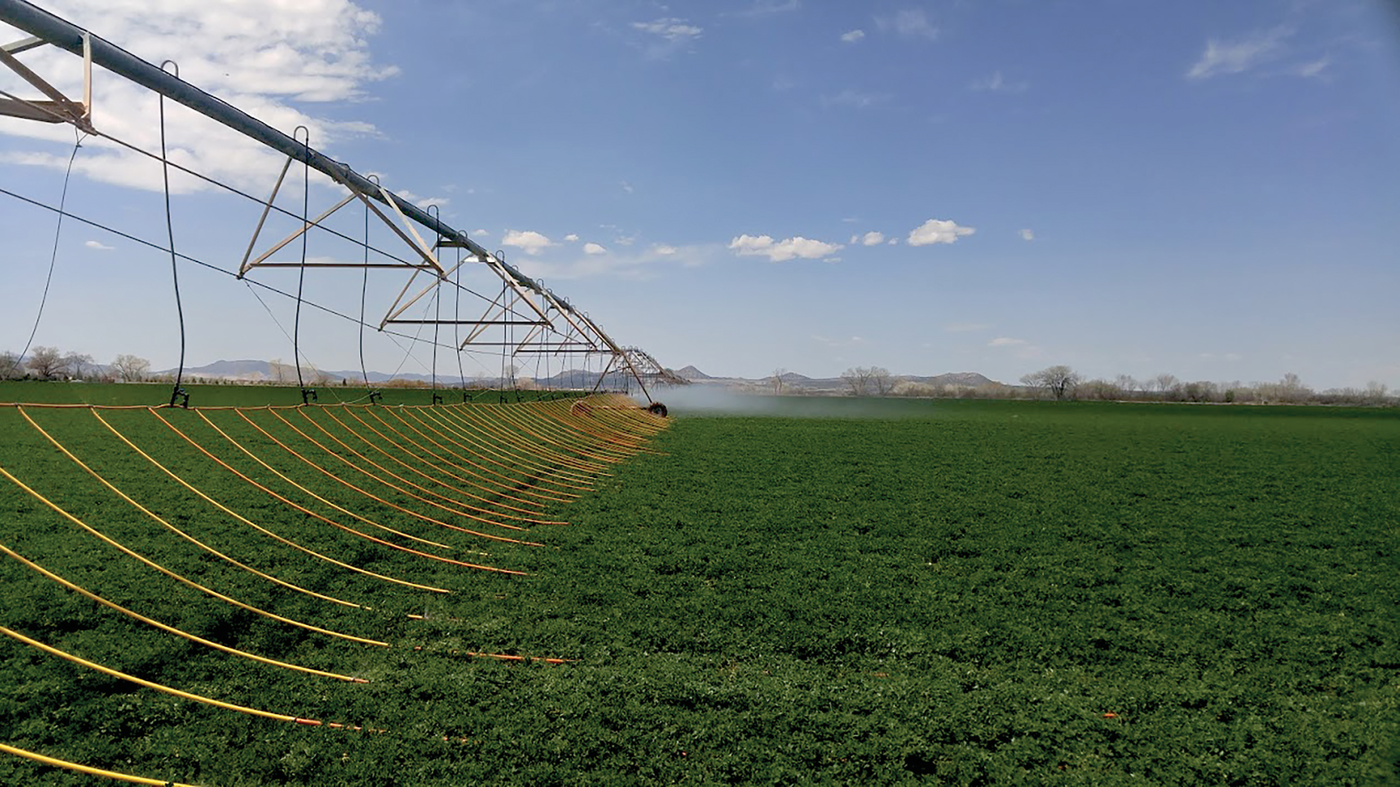
With MDI, water filtration and water treatment are vital. Because it is a drip irrigation system that slowly releases water with very low pressure, it can be prone to build up or clogging from bacteria, salts, sand, or other forms of sediment. Yost says he has also seen growers jump into this technology but quickly run into issues because they were not adequately prepared. However, while many sprinkler systems struggle when water flow rates are low, MDI can have better success because it does not need high flow rates like a more traditional sprinkler to rotate, wobble, or spin. It can be better suited for low-flow applications, which can occur when a well has low capacity, there are drought conditions, or water restrictions are in effect.
"To summarize, our results in this study and my other related studies the last five or six years have shown that LEPA and MDI do not work best in every year or field,‖ Yost says. This means the water-saving and production benefits of the LEPA and MDI systems are highly site specific. Thus, we highly recommend that growers and crop advisers trial a variety of sprinkler types on small portions of a pivot to evaluate how they perform and learn what production and water-savings advantages they may provide. These tests can be an inexpensive and effective way to learn which systems will perform best."
Over the years, Yost and his colleagues have studied various methods for reducing water use in agriculture and have found that using LEPA and other similar low-elevation technologies are one of the most cost effective ways to lower water consumption, particularly when looking at the dollar amount per acre of the water reduction. He says it should be considered on many farms.
The benefits to the crop alone can rapidly increase farm profits,‖ he says. A LEPA system usually costs at least three times more than a MESA sprinkler. This might be about $15,000 for a center pivot compared with about $5,000. The additional $10,000 investment divided by 120 acres, the coverage of a standard quarter mile pivot, is an extra $83 per acre. The sprinklers will usually last at least five years so that is approximately an extra $17 per acre per year. Small increases in crop production would quickly cover and exceed the additional investment. The extra investment often deters a lot of farmers and advisers, but many should take a look or another look at these options because they can often improve production and reduce water use, water that at some point could also potentially be marketed to others for additional profits.
MDI: A Potential Option for Higher-Value Crops, Difficult Environments
When it comes to MDI, Yost says they had hoped it would show better results than it did. During the study, they struggled to maintain the system due to challenges posed by water filtration. While groundwater is often cleaner than surface water, it still caused issues during their study.
The amount of maintenance and water treatment needed for MDI may not be possible or feasible for some growers, but Yost says that with the right preparation, it can be a highly effective and efficient system. While it can be a larger investment versus other sprinkler systems, it has many specialized applications that may allow a grower to maximize crop production on farmland that lacks ideal field conditions. Yost says MDI lends itself to higher value crops and difficult environments, such as low flow, high soil slope, poor soil infiltration, and water restrictions.
"In theory, it is an excellent concept and should increase water use efficiency by greatly reducing wind drift and evaporation," Yost says. In practice, it can be difficult. It will require similar management as a subsurface drip irrigation. That said, I do think it is a great intermediary option before going to subsurface drip. Drip on center pivots offers a lot of advantages because the drip tape is on the surface and can be more easily maintained. Furthermore, center pivots are automated and can be controlled remotely and require much less maintenance than subsurface systems.
Some next steps in Yost’s work have included embarking on further studies to investigate irrigation systems in a more controlled way. With targeted approaches, they hope to be able to tease apart where certain systems can provide the most benefit with the hope of eventually building tools that help certified crop advisers, growers, and others determine which system may be the best match for their fields.
In addition to water use efficiency, they have also started to study how irrigation systems impact other vital aspects of farming, such as pest and weed management, nutrients, and even soil salinity.
Water scarcity is and will continue to be a significant issue for agriculture in the western United States with drought causing more crop loss than anything else. Yost says that this type of work that helps evaluate the impact of irrigation systems, crop production, and water use will be increasingly important for ensuring agriculture resiliency to drought and water security for the West and many other parts of the country and world with water scarcity concerns.
Dig Deeper
For more details on this topic, check out the original article:
Holt, J., Yost, M., Creech, E., Winward, D., & Barker, B. (2024). On-farm evaluations of overhead irrigation sprinkler packages at full and reduced rates. Soil Science Society of America Journal, 88, 152–165. https://doi.org/10.1002/saj2.20611
Self-Study CEU Quiz
Earn 1 CEU in Nutrient Management by taking the quiz for the article at https://web.sciencesocieties.org/Learning-Center/Courses. For your convenience, the quiz is printed below. The CEU can be purchased individually, or you can access as part of your Online Classroom Subscription.
- Application efficiency is the
- amount of irrigation applied to a field that becomes available to the crop.
- amount of water that is dispersed from a sprinkler each minute.
- distance the sprinkler is from the crop.
- cost per acre to irrigate a field.
- LEPA is prone to cause runoff in a sloped area.
- True.
- False.
- Which of the following is an advantage of an MDI system?
- It positions sprinklers low and closer to the crops.
- It does not need high flow rates.
- It is not prone to clogging.
- It does not need a lot of maintenance.
- A LEPA system usually costs ____ a MESA sprinkler.
- less than
- the same as
- no more than twice as much as
- at least three times as much as
- Studies show that the water saving and production benefits of the LEPA and MDI systems are not site-specific.
- True.
- False.
Text © . The authors. CC BY-NC-ND 4.0. Except where otherwise noted, images are subject to copyright. Any reuse without express permission from the copyright owner is prohibited.







